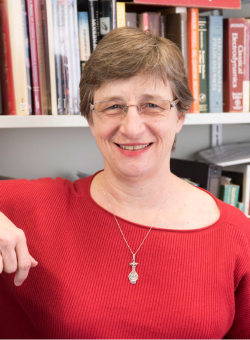Ocean floor view to give clearer picture of subduction zone earthquakes
Scientists hope that new ocean-bottom seismometers will help reveal the earthquake and tsunami potential for a ‘locked’ part of the Hikurangi Subduction Zone beneath the lower North Island.
Earthquake Commission (EQC)-funded research by Professor Martha Savage and her team from New Zealand (Victoria University of Wellington and GNS Science) and Canada (University of Ottawa and Dalhousie University) will next year deploy 20 ocean bottom seismometers to better understand how the Pacific Plate is slipping underneath the Australian Plate, off the east coast of Wellington.
Professor Savage says that a large portion of the fault is ‘locked’ compared with that further up the east coast, but how often earthquakes occur is not well understood.
“This is a big hazard for us because if it goes, it’s going to go fast. The result would be a large and sudden earthquake that could also trigger a tsunami,” says Professor Savage.
She explains that the ocean bottom seismometers will help scientists determine the seismic activity in this area and estimate the potential for future events.
Ocean-bottom seismometers have previously been used to study earthquakes at the Hikurangi Margin further up the east coast and in short-duration subsurface imaging around New Zealand, but none have ever been deployed for time periods greater than a few weeks in the ‘locked’ area in the lower North Island.
Professor Savage will partner with scientists from GNS Science and her counterparts from Canada to understand the frequency and location of previous earthquakes.
The Canadian Government is co-funding the research, as Canada has a similar fault along their West Coast, and they hope the New Zealand research will help scientists in both countries.
“The GeoNet network does an excellent job of monitoring earthquakes on land. Yet, we are effectively blind to small earthquakes offshore. The behaviour of these more frequent small earthquakes can tell us more about the larger earthquakes that occur less often. We’re expecting to see 10 times more earthquakes than are currently reported,” says Professor Savage.
She explains the data will improve our understanding of why the locked and slipping sections of the Hikurangi Subduction Zone behave differently.
Aside from the earthquake hazards from ground shaking, Professor Savage says better understanding of earthquakes causing tsunamis off the coast is just as important.
She points to what happened in Japan on 11 March 2011, when the infrastructure was able to withstand a magnitude 9.1 earthquake but was not prepared for the tsunami that followed.
“Our building standards are what keep people safe. We hope results will feed into the National Seismic Hazard Model and help to increase our overall resilience and preparedness as a nation,” she explains.
Professor Savage’s seismic ocean research was recently one of 13 recipients of EQC’s 2022 Biennial Grants.
Biennial Grants have been running since 1989 for research to better understand natural hazards and identify ways to reduce the impact of those hazards for New Zealanders.
EQC Research Manager, Dr Natalie Balfour says that EQC is funding the Victoria University of Wellington project as it fits perfectly with EQC’s vision to create better understanding of the natural hazards we face.
“EQC has previously funded research on the Hikurangi Subduction Zone, but Professor Savage’s work will hopefully add another valuable piece to that puzzle.”
Dr Balfour says that EQC annually funds around $20 million in natural hazard research, including funding Geonet, to minimise the impact of future events.
The seismometers will be distributed in early 2023 and lifted after 12 months. Data will then be collected and assessed.

About the Earthquake Commission:
- The country’s EQC scheme was set up in 1945 to provide affordable natural disaster insurance to help communities recover from natural disasters. Today, EQC’s mission still reflects that same commitment: to reduce the impact on people and property when natural disasters occur.
- EQC is a Crown Entity that operates under the Earthquake Commission Act 1993. We invest in natural disaster research and education to help communities to reduce their risks, and we provide natural disaster insurance cover for damage to residential properties caused by earthquakes, volcanic eruptions, hydrothermal activity, tsunamis, as well as damage to land from storms and floods.
About the Biennial Grants:
- Biennial Grants have provided around $10 million in funding for more than 250 projects over the years.
- Every two years, EQC invites experienced and emerging researchers to submit proposals for Biennial Grant public good research (available for public use) as defined by the Earthquake Commission Act 1993 and EQC’s Research Investment Priorities Statement.
- Successful candidates were those that not only showed their work aligns with EQC’s focus areas but also successfully weaved a mātauranga Māori, climate change and/or social science lens over their research.